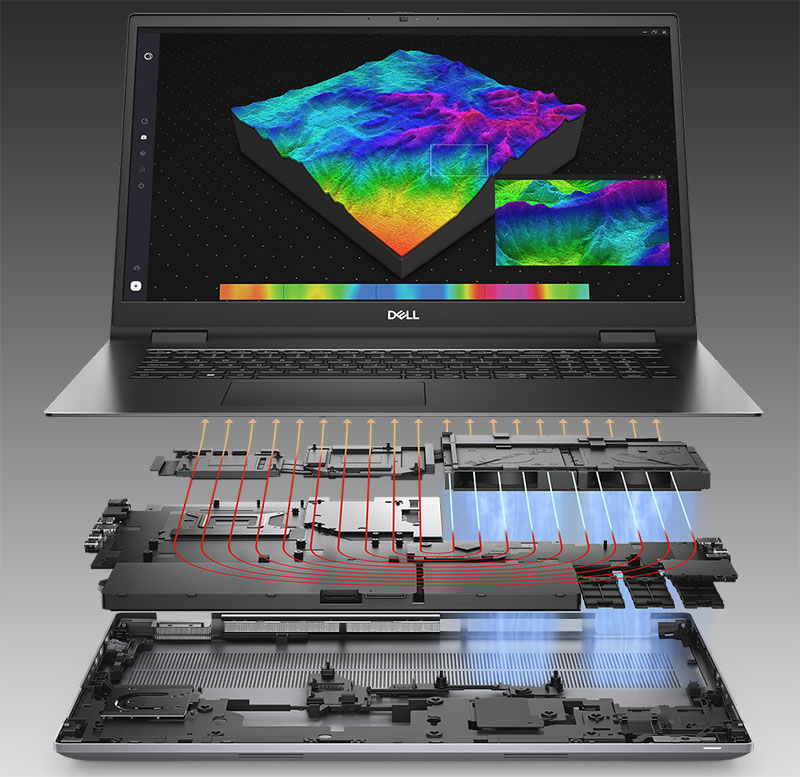With last week’s announcement that the Varjo Reality Cloud had exited beta and is now in full release, we basically have two metaverse camps: Meta’s, which is focused on the consumer and revenue and is defined by performance limitations associated with its wireless Oculus headset; and the Varjo-Nvidia approach where performance is king, business is the primary focus, and the result is far closer to the Star Trek Holodeck goal that is anticipated to be the eventual metaverse photorealistic experience the market has been primed to want.
Let’s talk about that dynamic this week. Then we’ll close with my product of the week — the Dell Precision 7770 — a mobile workstation which could be used to create the higher-end metaverse and ticks all the boxes for an engineer working either remotely or in hybrid mode predominantly using a borrowed desk or huddle room when in the office.
Meta
Meta often seems to be mainly focused on making what appeared to be a bad decision by its founder and CEO, Mark Zuckerberg look good. In this case, there was an internal dispute between Zuckerberg and how the company’s metaverse effort will play out. Prior leadership wants to focus on high quality, while Zuckerberg wants to focus on affordability — which is kind of ironic given how rich the guy is.
Generally, and we’ve seen this repeatedly in the tech market, particularly with VR efforts, the best path is the path that Microsoft took with its AR solution, the HoloLens. First, focus on getting the product right and provide it to businesses that can afford the extra cost. Then cost-reduce the effort and eventually (HoloLens clearly hasn’t entered this phase yet) reduce the cost so the price is palatable to a broader and increasingly consumer-focused market.
Meta’s Oculus headset has a decently priced consumer solution which is fine for a lot of games, but when it comes to rendering the metaverse, the quality of the result looks cartoony and well off from the photorealistic goals for the virtual reality segment and current audience. In short, the Oculus headset, while impressive, doesn’t have the performance to create the level of VR needed for immersion, and immersion is what people are looking forward to with the metaverse.
One very troubling aspect of Meta’s approach appears to be overcharging developers for their metaverse implementation in exchange for the privilege of operating on the platform. This is all about getting critical mass in developers. Starting out with the impression that they are overcharging will undoubtedly motivate developers to find another, lower-cost platform on which to sell their solutions.
Varjo and Nvidia
These two companies aren’t in competition. Varjo makes what appears to be the best professional grade VR headset in the market. Nvidia’s metaverse effort, which largely surrounds its Omniverse tool set, is aggressively closing the gap on photorealistic experiences.
The Varjo cloud and Nvidia’s cloud resources also engage and use developers to assure there is ample content and both users and developers can gain access to that content as needed. In contrast to Meta, Nvidia and Varjo appear to be more about providing access at this phase than trying to milk every penny out of the people they want to develop on their respective platforms.
In contrast to Meta, both Varjo and Nvidia have showcased avatars and images that are nearly indistinguishable from reality with one exception: Varjo’s human looking avatars don’t yet have the ability to show emotion.
While they are graphically far more realistic than Meta’s cartoonish effort, the lack of emotion puts them on the wrong side of the uncanny valley.
Nvidia has been showing avatars that can emote and are far more realistic.
This implies that the two companies, should they cooperate more closely, could help solve each other’s realism problems and, by working together, they could move the ball significantly toward that hyper-realistic metaverse future we are all striving for.
Wrapping Up
Conceptually, Meta and both Nvidia and Varjo are on different pages when it comes to price and capabilities for their respective metaverse solutions.
Meta is all about low entry price and physical convenience while over pricing its services to developers on its emerging Meta platform. Both Nvidia and Varjo are far more focused on the goal of a photorealistic experience, and they have chosen the professional market as a first target that can, and is, funding it today.
I think the result is that a lot of consumers will be disappointed with their first experiences in the Meta cloud but, already, developers are praising Nvidia’s and Varjo’s efforts (Varjo also announced that Volvo was using its new Reality Cloud Solution to collaborate on new cars).
The metaverse is coming. My hope is that Facebook doesn’t do what 3D TV did and destroy the concept for consumers early on, but clearly the professional space is well taken care of by companies like Varjo and Nvidia.

Dell Precision 7770 Mobile Workstation
I’m constantly on the hunt for home office products that address the new post-pandemic work-from-home normal. Given that the folks that are mostly working from home and either never go into work or only go to the office occasionally are more interested in screen real estate and performance than battery life, the ideal size while remaining portable is between 16 and 20 inches, not 15 inches or smaller like most laptops.
Last week, Dell launched three Latitude Precision mobile workstations:
- The 9330 — this is in the sweet spot with portability with a 13-inch screen that I think better fits the market the way it was pre-pandemic.
- The 7670 with a 16-inch screen that is far closer to my large screen ideal; and
- The 7770 that comes with a 17.3-inch screen which falls within my new sweet spot for hybrid and remote-only folks working from home.
Dell’s Latitude Precision 7770 is a workstation class product, which means it is targeted at engineers, but it has a range of configurations which could also make it attractive to a wider range of remote workers.
For instance, in its base configuration with an Intel i5 core and Intel integrated graphics, it would be fine for the average productive worker working from home who needs that larger screen but didn’t need the performance.
Or, for optimal performance it can be configured for up to an Intel i9 and an Nvidia GeForce RTC 3080Ti which should keep an engineer happy but would also be awesome for gaming (not that any employee would ever think about gaming on their company PC).

Dell Precision 7770 mobile workstation (Credit: Dell)
As a result, depending on the chosen configuration, when it comes to productivity or performance for a user working from home, the Dell Latitude Precision 7770 laptop may be the closest thing to an ideal product for what is an impressively wide audience that includes productivity workers, engineers, and even those that like to game.
A workstation class product isn’t a cheap date, but it typically comes with the best security, management tools, and highest storage (up to 16 TB). As you would expect, this laptop comes with a Windows Hello compliant camera, dual array microphones with noise suppression, and a 500-nit screen which is bright enough to use outdoors, at least in the shade (I’d still avoid direct sunlight). NFC and smart card readers are optional, and both Wi-Fi 6E and Bluetooth 5.2 are included.
As for sustainability, this laptop is an EPEAT Gold-registered product and uses 100% recycled plastics and cardboard in packaging. Finally, given the potential for a high-performance configuration, this laptop has one of the most advanced cooling systems that Dell has fielded, making it cool for your hands, but it could warm up your lap. One of my favorite Dell features on this laptop is “wake on approach” which blanks the screen when you leave and starts the sign in process when it sees you approach your workspace.
I believe the best post-pandemic laptop is one that addresses the current work requirements of performance and screen size, and the Dell Precision 7770 mobile workstation does this nicely and is, as a result, my product of the week.



























































